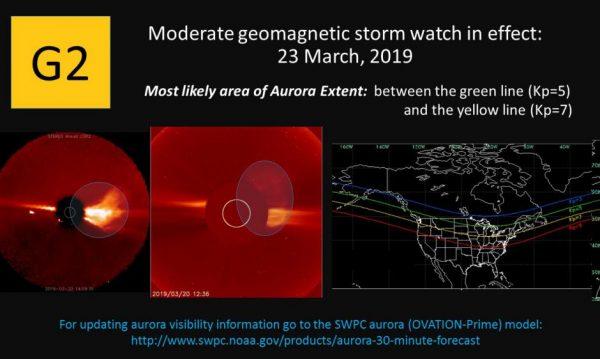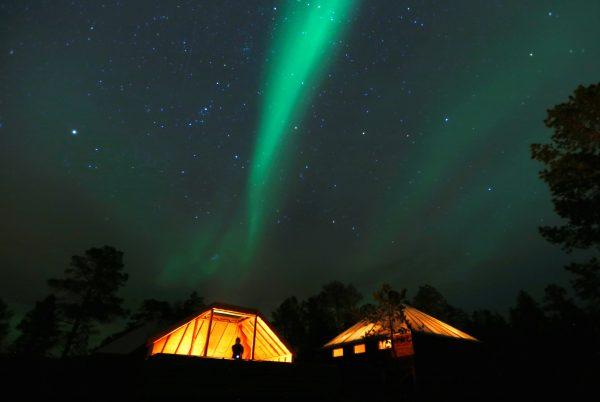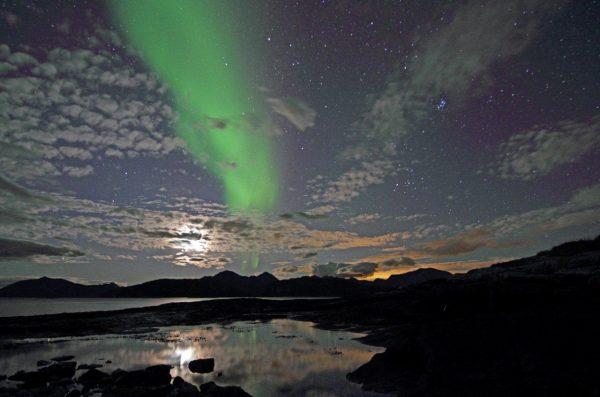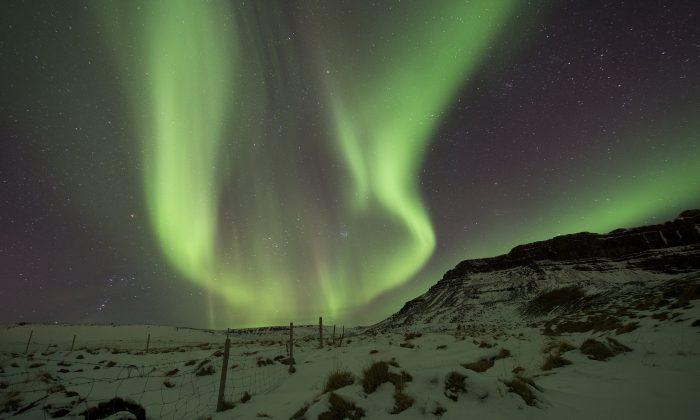New York and Chicago residents could see the Northern Lights, or the aurora borealis, over the weekend due to a coronal mass ejection (CME) from the sun, according to U.S. weather officials.
The agency said that an “asymmetric halo CME was observed,” and it appears to be partially directed at the Earth.

According to the map, the most likely area of an aurora event is between the green line and the yellow line, which appears to encompass parts of New York, northern Illinois (including Chicago), Wisconsin, North and South Dakota, Montana, Idaho, Washington state, Iowa, Michigan, Maine, Vermont, New Hampshire, and Massachusetts.
The very northern parts of Ohio, Pennsylvania, Connecticut, Rhode Island, and Indiana might see the Northern Lights.
“An asymmetric halo CME was observed in SOHO/LASCO coronagraph imagery and initial analysis of the CME in both LASCO and STEREO-A coronagraph imagery shows an Earth-directed component is likely,” the NOAA added.
NASA said there is a difference between a solar flare and CME.
One of the worst solar storms ever recorded was the 1859 Carrington Event, which is said to have created an aurora around the world and caused telegraph wires to erupt into flames, CNET reported. If the same event were to happen today, it could produce disastrous results.
If one wants to witness the Aurora Borealis, travel far away from cities as the light pollution interferes with one’s ability to see the night sky.

The aurora typically forms some 50 miles to 300 miles above the Earth’s surface, according to NOAA.
Every year, tens of thousands of tourists travel to Norway, Iceland, Alaska, Canada, and other northern areas to see the Aurora Borealis.

But, “when space weather activity increases and more frequent and larger storms and substorms occur, the aurora extends equatorward,” said NOAA. During large solar events, that’s when Aurora Borealis can be observed in much of the United States, Europe, and Asia.
“During very large events, the aurora can be observed even farther from the poles ... Of course, to observe the aurora, the skies must be clear and free of clouds. It must also be dark so during the summer months at auroral latitudes, the midnight sun prevents auroral observations,” the agency says.






Friends Read Free